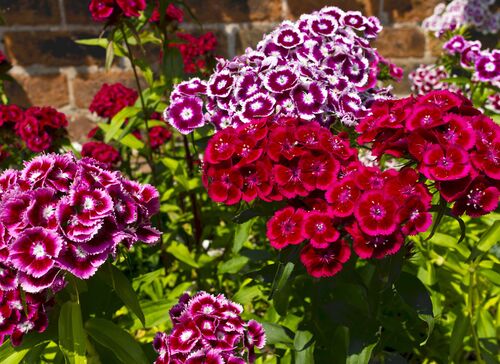Growing and Sowing Sweet William

Sweet William (Latin name: Dianthus barbatus) is a beautifully flowering plant with, depending on the variety, a lovely smell. The flowers grow like umbrellas on the stem. It is a somewhat old-fashioned plant that belongs to the genus carnations and originates from East Asia and Eastern Europe. There are annuals, but also biennial or perennial types. Most flowers of the Sweet William are pink, red, purple and white.
Sowing and growing Sweet William
Sweet William is a beautiful flowering annual plant. The plant blooms with many small flowers that together, like an umbrella, form umbels on the stem. The colours are often pink, red, purple and white. It is a rather old-fashioned but very strong flower.
The flowers are insect-friendly and attract bees and butterflies, among others. Moreover, they are very suitable as cut flowers. This allows you to use them in a border, picking garden or kitchen garden, for example.
Sowing Sweet William
When Sweet William can be sown depends on the species and whether they are annual, biennial or perennial. In principle, all varieties can be sown in a greenhouse from March to May. Directly in the garden can be sown from May to July. The latter is preferable for the perennial varieties. The plant will probably not flower in the same year, but it already forms a firm basis for the following year. So look carefully at the packaging to see what you prefer.
Position and soil for Sweet William
Preferably choose a sunny, wind-sheltered spot in the garden, but Sweet William also grows well in light shade, although the flowering will be less exuberant. The plant likes a humus-rich, not too wet soil.
How to care for your Sweet William plant
Sweet William does not require much care. Water regularly in dry periods and possibly fertilize 2 times during the flowering season. Remove the faded flowers. Protect the plant from frost in winter by, for example, placing leaves or the like on it. Sweet William easily self-seed, leave a number of faded flowers for this.
Is Sweet William bee- and butterfly friendly?
Sweet William attracts many beneficial insects, such as bees, butterflies and bumblebees, and is therefore a good addition to biodiversity in the garden.
Sweet William in a vegetable garden
Sweet William attracts many pollinators, which are of course also important in a vegetable garden. However, the plant is susceptible to a number of diseases and pests, such as mildew, slugs and aphids. This can also affect the other plants in the vegetable garden.
Is Sweet William edible and/or medicinal?
The flowers of the Sweet William are edible. The taste is a bit spicy/peppery. Remove the green parts, they are bitter. The leaves and stems are poisonous.
Please note, we at Dutch Garden Seeds do not give medical advice. Always ask a professional if and how the plant can be used medicinally.
Sweet William seeds in our collection
We have seeds of Sweet William in our range. These are from the brand 'Buzzy Seeds'.
Tips for sowing sweet william
Remove the faded flowers regularly, this can extend the flowering period.



